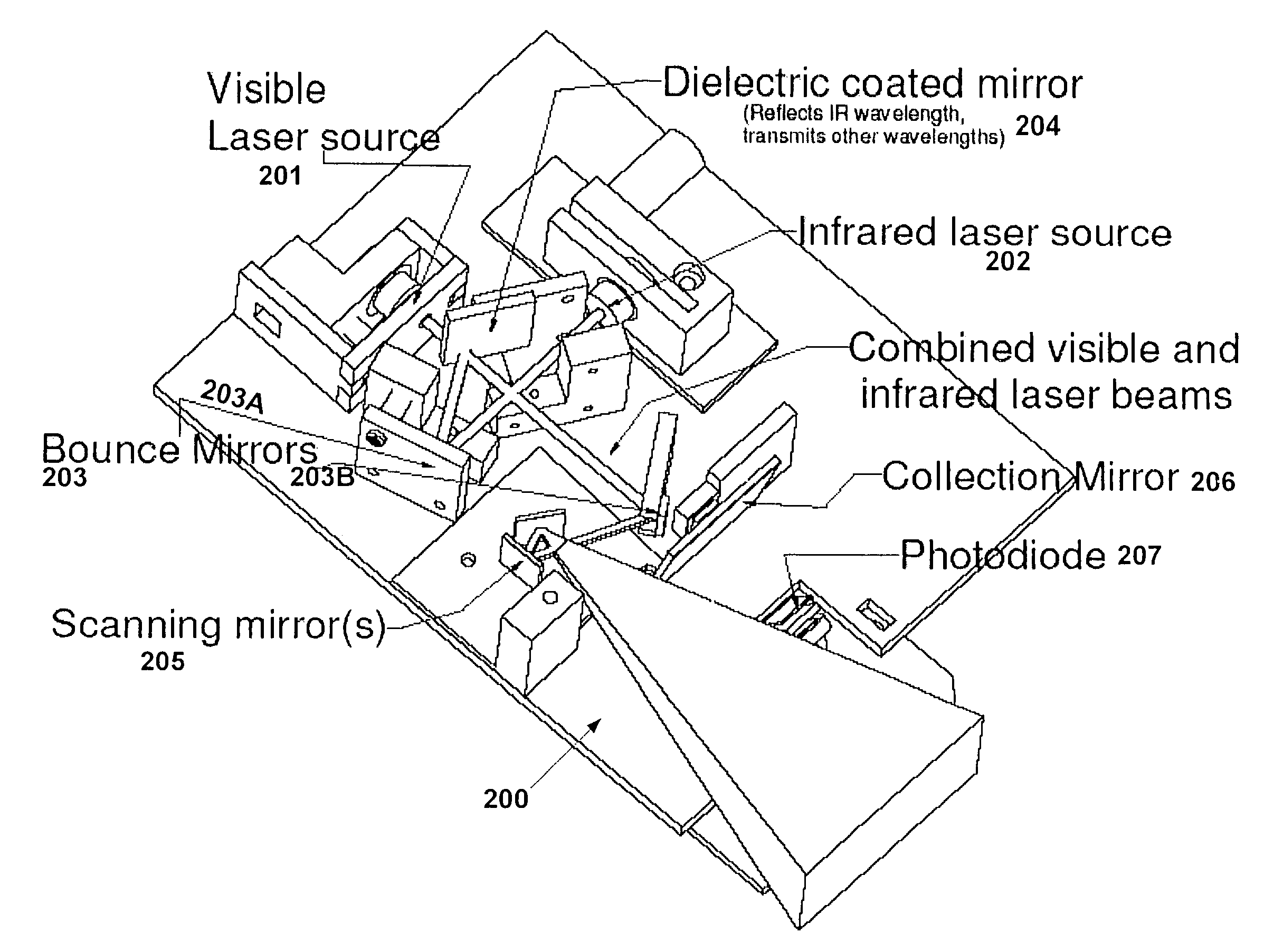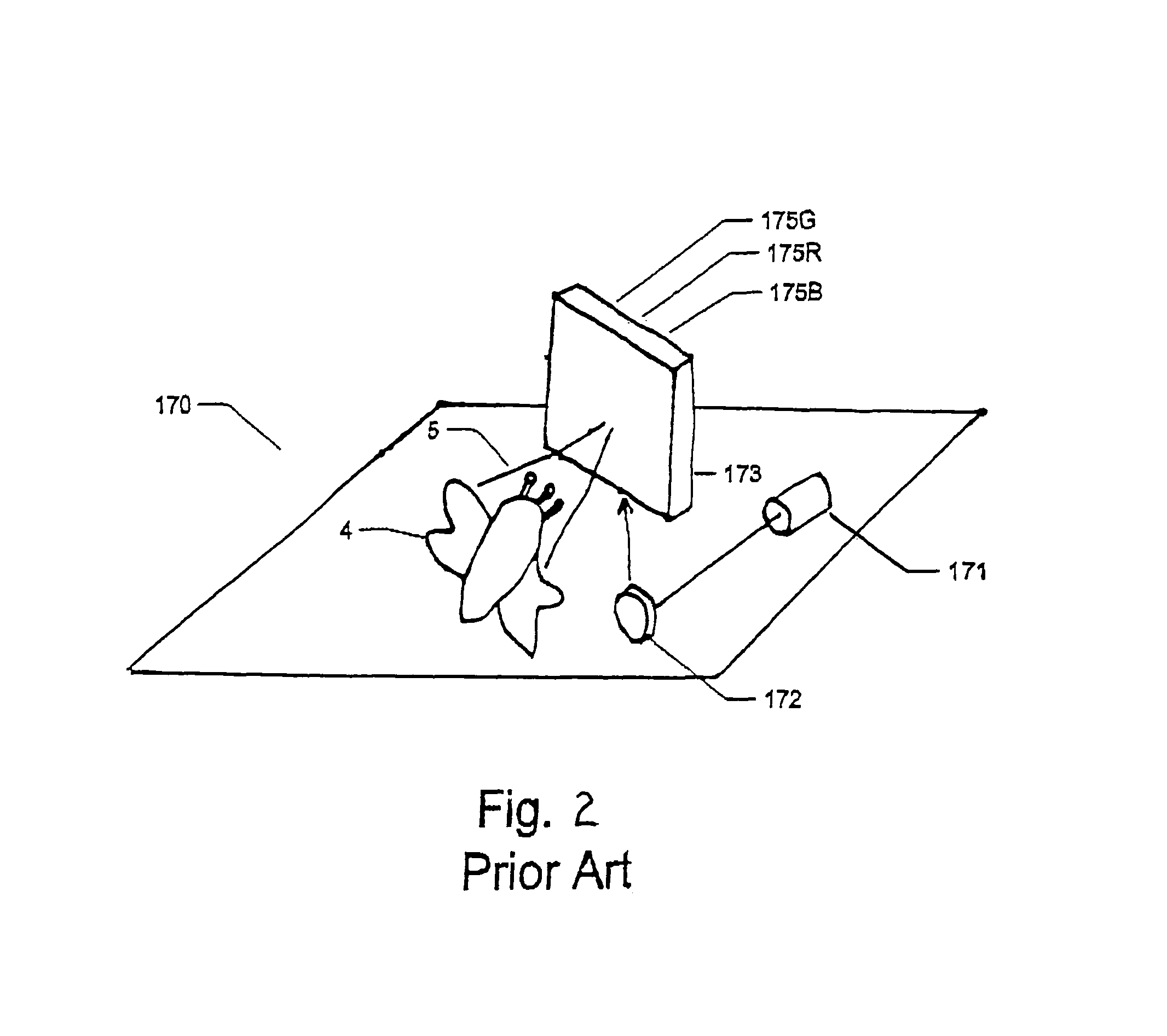Micro vein enhancer
a vein enhancer and micro-vein technology, applied in the field of imaging devices, can solve the problems of relativly difficult design and build a system that closely aligns the captured image and the projected image, and achieve the effect of reducing and/or reducing the amount of botched attempts to pierce the vein and being convenient to opera
- Summary
- Abstract
- Description
- Claims
- Application Information
AI Technical Summary
Benefits of technology
Problems solved by technology
Method used
Image
Examples
first embodiment
[0046]Regarding the first embodiment, it is necessary to co-axially align the two lasers. Co-axially aligning the two lasers can be achieved in a multitude of ways. Two methods that have proven to be effective include implementing, either, a dielectric mirror or a polarizer.
[0047]The first configuration includes a first laser calibrated to transmit light in the Infrared (hereinafter IF) spectrum, that is 740 nm, and a second laser calibrated to transmit a light in the red color spectrum, that is ≈638 nm. The first configuration, as mentioned above, implements a hot mirror 204 coated with a Dichroic substance, which separates and directs the light onto two separate diodes. This system allows the visible and IR laser reflections in real-time without the use of a memory chip. With this embodiment the 638 nm laser 201 is oriented behind the dielectric mirror. The dielectric mirror is selected so that the 638 nm laser light passed through but the 740 nm is reflected. The 740 nm laser is ...
second embodiment
[0049]Regarding the second embodiment, the two lasers are multiplexed. It has been noted that the signal received by the 740 nm PD of the present invention is representative of both the veins and the surface topology of the patient. Put another way, the surface of the patient affects the reflected signal. This is not desirable, in that the area of interest is the veins of the patient and not the surface topology of the patient. Thus, by using a second PD for receiving the 630 nm reflected signal, the 630 nm signal (the topology) can be subtracted from the 740 nm signal (topology+veins) yielding a signal that is solely the veins (topology+veins-topology=veins). In this system the microprocessor 250 or state machine circuit, as seen in FIG. 8, can record the reflection from the visible laser and the IR laser can be turned on for one frame, every other frame, or every other scan line. Hence, a new signal would contain a combined laser reflection. The new signal would then be subtracted...
PUM
 Login to View More
Login to View More Abstract
Description
Claims
Application Information
 Login to View More
Login to View More - R&D
- Intellectual Property
- Life Sciences
- Materials
- Tech Scout
- Unparalleled Data Quality
- Higher Quality Content
- 60% Fewer Hallucinations
Browse by: Latest US Patents, China's latest patents, Technical Efficacy Thesaurus, Application Domain, Technology Topic, Popular Technical Reports.
© 2025 PatSnap. All rights reserved.Legal|Privacy policy|Modern Slavery Act Transparency Statement|Sitemap|About US| Contact US: help@patsnap.com



